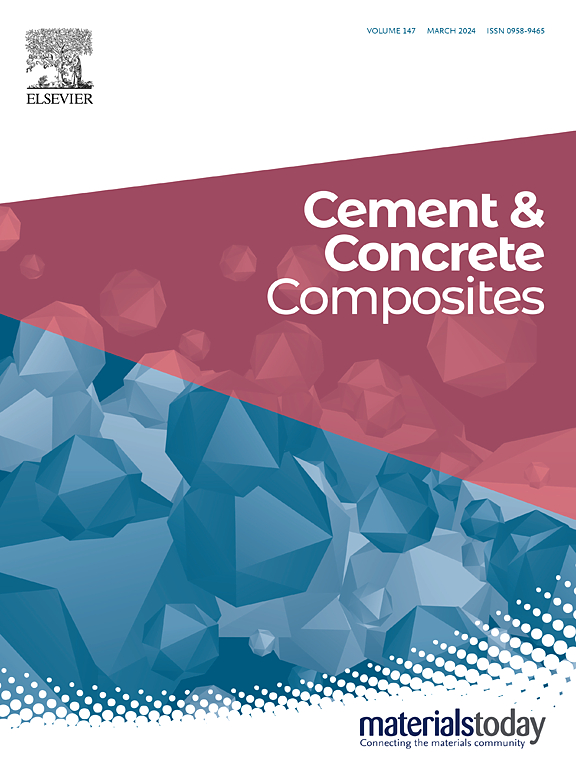New insights on thaumasite precipitation based on thermodynamic modeling and 3-year exposure of cement pastes to Na2SO4 and MgSO4 solutions
IF 13.1
1区 工程技术
Q1 CONSTRUCTION & BUILDING TECHNOLOGY
引用次数: 0
Abstract
Cement pastes were exposed to 0.10 mol/L Na2SO4 and MgSO4 solutions at 20 °C for over three years to investigate the precipitation mechanism of thaumasite and the associated phase evolution. Powder X-ray diffraction, thermogravimetric analysis, Fourier-transform infrared spectroscopy, and scanning electron microscopy coupled with energy-dispersive X-ray spectroscopy show that samples exposed to MgSO4 have lower contents of portlandite, calcite, and C-S-H, compared to those exposed to Na2SO4. In addition, samples exposed to MgSO4 contained significant amounts of thaumasite and brucite. Ettringite content is comparable in both conditions, but thaumasite is not detectable in samples exposed to Na2SO4. This difference can be attributed to the higher degree of supersaturation of thaumasite in samples exposed to MgSO4 compared to Na2SO4. Thermodynamic modelling was carried out to validate this hypothesis and the predicted phase assemblages show good consistency with experiments. By introducing a critical supersaturation into the thermodynamic phase equilibrium calculations, the model successfully reproduced the selective precipitation of thaumasite in samples exposed to MgSO4.
基于热力学模型和水泥浆在Na2SO4和MgSO4溶液中曝晒3年的研究对硫马石沉淀的新见解
采用0.10 mol/L Na2SO4和MgSO4溶液,在20℃条件下,对水泥浆体进行了3年以上的处理,研究了水泥浆体中索马锡的析出机理和相演化。粉末x射线衍射、热重分析、傅里叶变换红外光谱、扫描电镜和能量色散x射线光谱分析表明,与Na2SO4相比,MgSO4暴露样品的硅酸盐、方解石和C-S-H含量较低。此外,暴露于MgSO4的样品中含有大量的硫马石和水镁石。钙矾石的含量在两种条件下是相当的,但在暴露于Na2SO4的样品中检测不到钙矾石。这种差异可以归因于与Na2SO4相比,暴露于MgSO4的样品中梭马石的过饱和程度更高。热力学模型验证了这一假设,预测的相组合与实验结果吻合良好。通过在热力学相平衡计算中引入临界过饱和,该模型成功地再现了暴露于MgSO4的样品中硫马石的选择性沉淀。
本文章由计算机程序翻译,如有差异,请以英文原文为准。
求助全文
约1分钟内获得全文
求助全文
来源期刊

Cement & concrete composites
工程技术-材料科学:复合
CiteScore
18.70
自引率
11.40%
发文量
459
审稿时长
65 days
期刊介绍:
Cement & concrete composites focuses on advancements in cement-concrete composite technology and the production, use, and performance of cement-based construction materials. It covers a wide range of materials, including fiber-reinforced composites, polymer composites, ferrocement, and those incorporating special aggregates or waste materials. Major themes include microstructure, material properties, testing, durability, mechanics, modeling, design, fabrication, and practical applications. The journal welcomes papers on structural behavior, field studies, repair and maintenance, serviceability, and sustainability. It aims to enhance understanding, provide a platform for unconventional materials, promote low-cost energy-saving materials, and bridge the gap between materials science, engineering, and construction. Special issues on emerging topics are also published to encourage collaboration between materials scientists, engineers, designers, and fabricators.
 求助内容:
求助内容: 应助结果提醒方式:
应助结果提醒方式:


